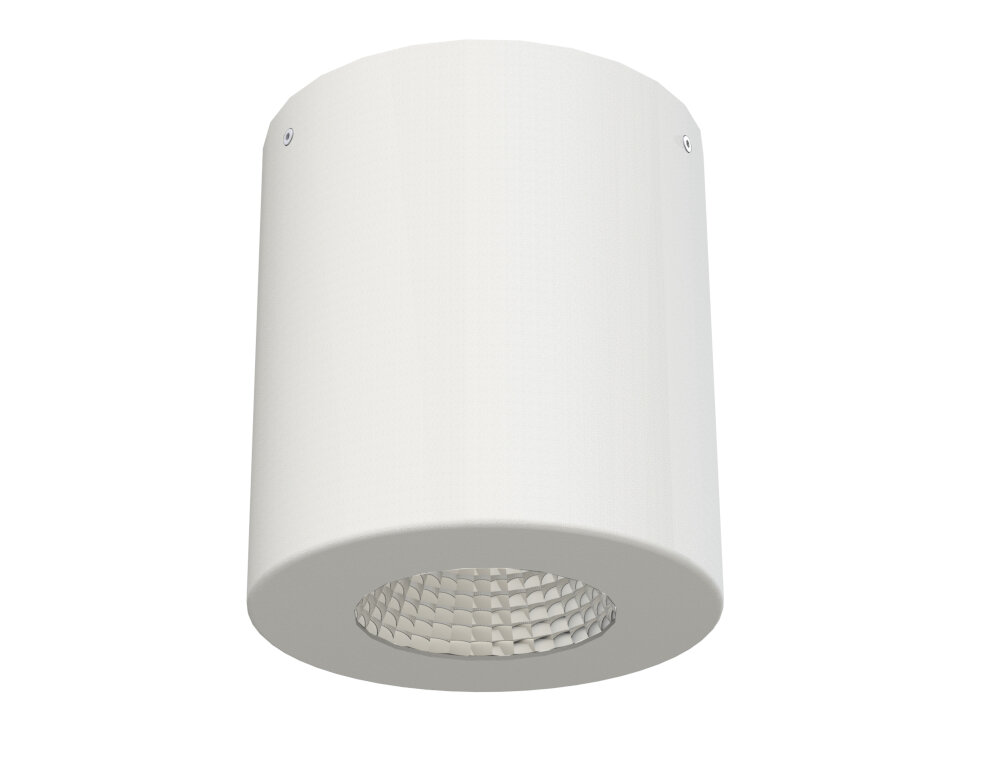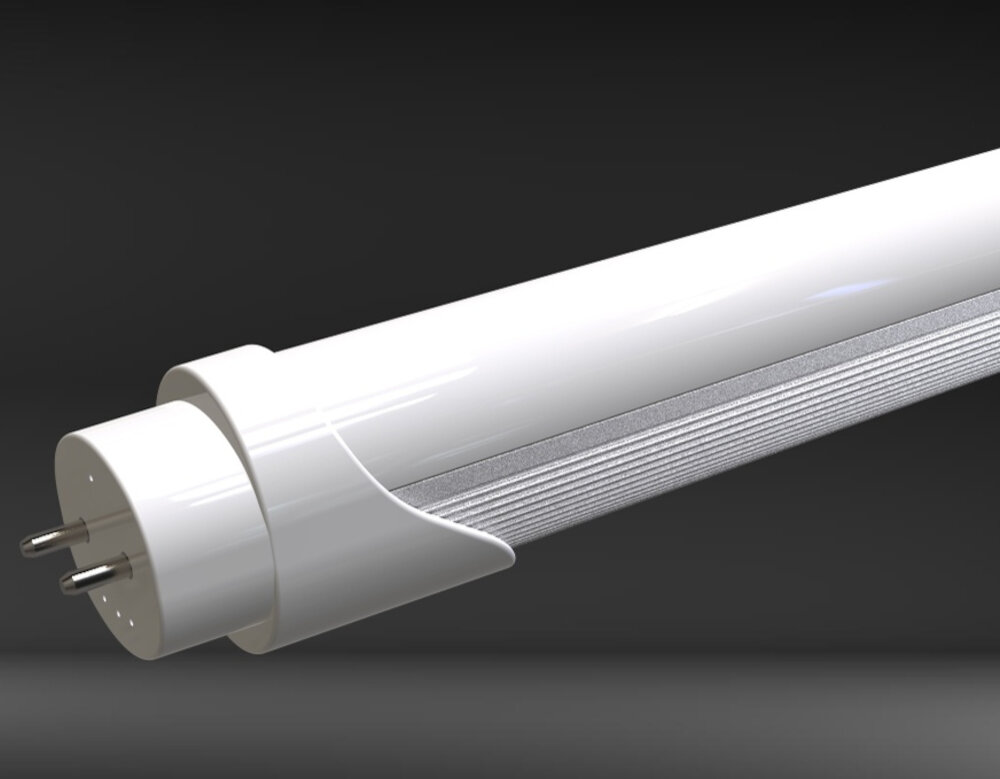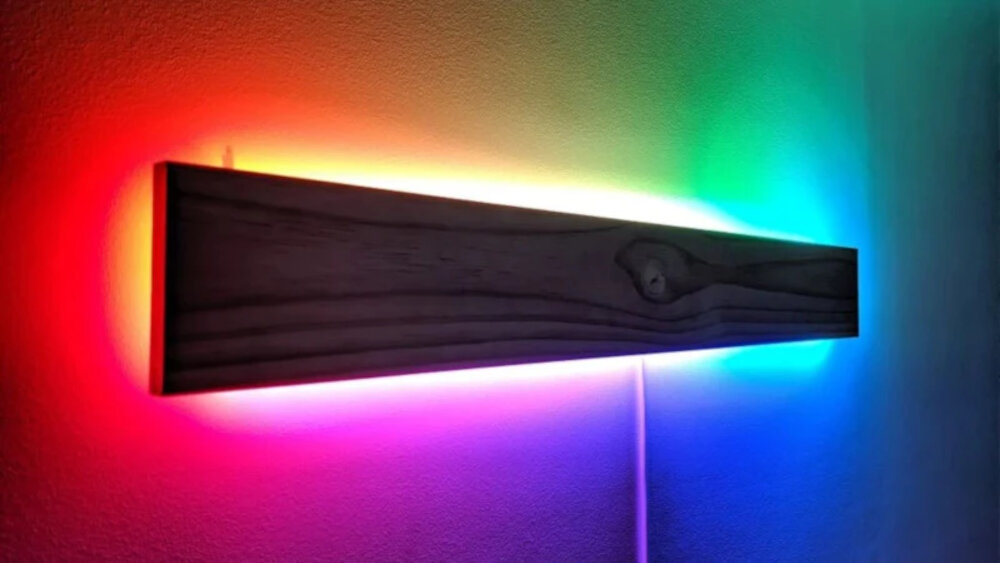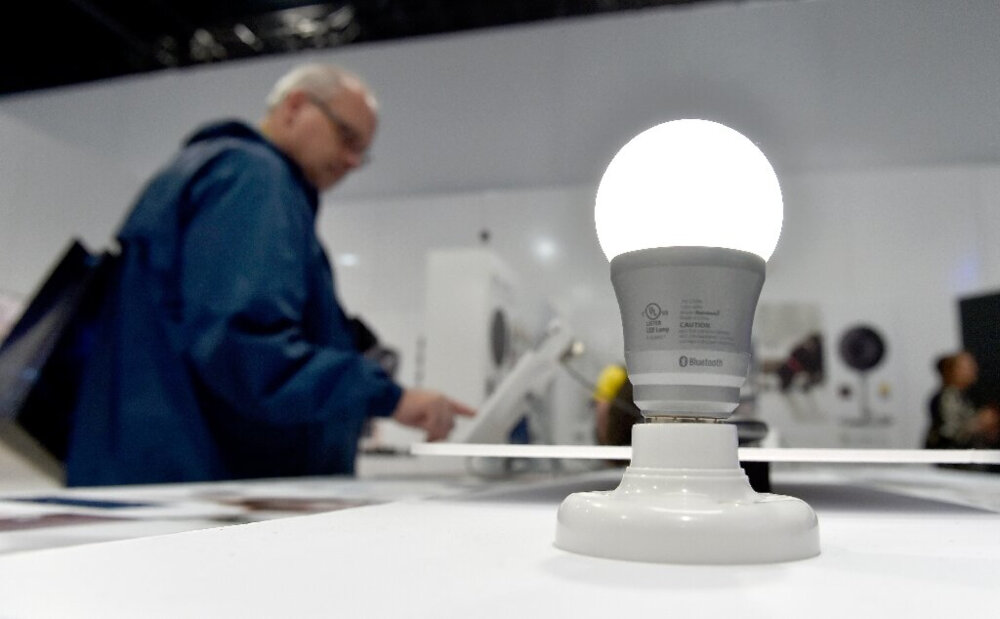Why Do LED Lights Still Glow When Turned Off? Explained

LED lights have become an increasingly popular choice for lighting solutions due to their energy efficiency and long lifespan. However, many people have noticed that even after turning off an LED light, it continues to emit a faint glow. This phenomenon may seem perplexing, but it can be explained by the unique characteristics of LED technology. At the heart of LED lights is a semiconductor chip that emits light when an electric current passes through it. Unlike traditional incandescent bulbs that rely on a filament, LEDs do not have a physical component that generates heat to produce light. Instead, they use a process called electroluminescence, which converts electrical energy directly into light. This difference in technology is what makes LED lights more efficient, but it also means that they can have a residual glow even when turned off.
Have you ever turned off your LED lights, only to find that they continue to glow with a faint light? This is a common issue that occurs due to a phenomenon known as \ghosting.\ Ghosting is caused by residual electrical charge in the wiring of your home, which can continue to power the LED lights even after they have been switched off. This phenomenon is particularly common in older homes with outdated wiring, but it can also occur in newer homes with modern electrical systems. Fortunately, there are several solutions available to help eliminate ghosting and ensure that your LED lights turn off completely when you flip the switch.
Understanding LED Lights

LED lights have become increasingly popular over the years due to their energy efficiency and long lifespan. However, many people still struggle to understand how they work. LED stands for light-emitting diode, which is a semiconductor device that emits light when an electric current is passed through it. Unlike traditional incandescent bulbs, LEDs do not have a filament that can burn out, making them much more durable. They also use less energy to produce the same amount of light, making them a more environmentally friendly option. One common misconception about LED lights is that they emit no light when turned off. However, this is not always the case. Many LED lights have a small amount of residual voltage that can cause them to glow even when turned off. This is known as ghosting or residual current. The amount of residual voltage can vary depending on the quality of the LED light, the wiring in the building, and other factors. While it may be a nuisance to some, it is not harmful and does not indicate a problem with the LED light itself.
LED lights, or Light Emitting Diodes, are a type of lighting technology that has become increasingly popular in recent years due to their energy efficiency and long lifespan. Unlike traditional incandescent bulbs, which use a filament to produce light, LED lights use a semiconductor to convert electrical energy into light. This results in a much more efficient use of energy, as less heat is generated during the process. Additionally, LED lights are highly durable and can last up to 25 times longer than traditional bulbs. Despite these benefits, some people have reported issues with LED lights continuing to glow even when turned off, which can be caused by a phenomenon known as \ghost voltage.\
LED lights work by using semiconductors to convert electricity into light. When electricity passes through the semiconductor material, it excites the electrons, causing them to release energy in the form of photons. These photons then create the light that we see. However, even when an LED light is turned off, it can still glow due to a phenomenon called \leakage current.\ This occurs when a small amount of electricity continues to flow through the circuit even when the switch is in the off position. This small amount of current is enough to cause the LED to emit a dim glow, which can be especially noticeable in a dark room.
LED lights have become increasingly popular due to their energy efficiency and longevity. They are also more environmentally friendly than traditional incandescent bulbs, as they do not contain any hazardous materials. Furthermore, LED lights emit less heat, making them safer to use in enclosed spaces. LED lights are also highly versatile and can be used in a variety of settings, from homes to commercial and industrial spaces. Additionally, the availability of LED lights in a range of colors and brightness levels has contributed to their popularity, as they can be used for both functional and decorative purposes. Despite their many benefits, however, it is important to understand why LED lights may still glow when turned off, as this can cause confusion and concern for some users.
Causes of LED Lights Glowing When Turned Off

LED lights have become increasingly popular in recent years due to their energy efficiency and long lifespan. However, many people have reported an issue where their LED lights continue to glow even when turned off. This can be a frustrating and confusing problem, as it is not immediately clear what is causing the issue. There are several possible causes of LED lights glowing when turned off, and understanding these causes can help you to troubleshoot the problem and find a solution. One of the most common causes of LED lights glowing when turned off is a phenomenon known as ghost voltage. This occurs when there is a small amount of voltage still present in the wires even when the switch is turned off. This voltage can be caused by a variety of factors, including electromagnetic interference, faulty wiring, or even nearby power lines. Ghost voltage is typically harmless and does not pose a safety risk, but it can be annoying to deal with. In most cases, the best solution is to install a switch that completely cuts off power to the lights when it is turned off.
Residual voltage refers to the small amount of voltage that remains in a circuit even when the power is turned off. In the context of LED lights, residual voltage is the reason why they sometimes continue to glow faintly even after being turned off. When the switch is turned off, the flow of current to the LED chips is interrupted, but the residual voltage can still activate the semiconductors, causing them to emit a small amount of light. This can be caused by a variety of factors, such as a faulty switch, poor wiring, or the inherent properties of the LED itself. While residual voltage is generally harmless, it can be a nuisance for those who are sensitive to light or who require complete darkness for sleep.
Electromagnetic induction is a phenomenon in physics that explains the production of an electromotive force (EMF) in a conductor when it is exposed to a varying magnetic field. This process is the foundation of many electrical devices, including generators, transformers, and motors. When a conductor is placed in a magnetic field, the electrons in the conductor move, creating an electric current. This current can cause a magnetic field, which in turn can induce an electric current in another conductor. This process is used to power many electronic devices, including LED lights, which can continue to glow even when turned off due to residual electric currents induced by the electromagnetic fields around them.
Faulty wiring is one of the major reasons why LED lights may continue to glow even after being turned off. This occurs when the electrical system in a house is poorly designed or when the wiring is damaged or outdated. When this happens, the electric current may continue to flow through the circuit even when the switch is off, causing the LED lights to emit a faint glow. Additionally, other electrical appliances or devices that are plugged into the same circuit may also contribute to this problem. Therefore, it is essential to have a qualified electrician inspect and repair faulty wiring to prevent any potential electrical hazards and ensure that your LED lights function correctly.
One common problem related to LED lights is the phenomenon of them still glowing when turned off. This issue mostly occurs due to the residual current flow in the circuit, which is also known as phantom voltage. The electrical wiring of the switch may be faulty, or the switch itself may not be suitable for LED lights. In some cases, the wiring may be too long, causing a high amount of resistance that generates a small amount of current. This issue can be fixed by using a switch that is specifically designed for LED lights or by installing a capacitor across the switch. Additionally, checking the wiring and replacing any faulty components can help resolve the issue.
Solutions to LED Lights Glowing When Turned Off

LED lights are a popular choice for homeowners due to their energy efficiency, long-lasting lifespan, and bright lighting capabilities. However, some people may experience a frustrating issue where their LED lights continue to glow even when turned off. This phenomenon, also known as ghosting, can occur due to a variety of reasons. One of the primary causes is the presence of residual voltage in the electrical circuit, which can keep the LED lights illuminated even when the switch is turned off. This can be remedied by installing a switch with a higher rating, ensuring proper wiring connections, or using a specialized LED dimmer switch. Another cause of LED lights glowing when turned off is due to the presence of electromagnetic interference (EMI) from nearby sources. This can include appliances, electronics, or even the electrical wiring in the walls. In this case, it may be necessary to use an EMI filter or shielded cables to reduce the interference and prevent the LED lights from ghosting. Additionally, it is important to ensure that the LED lights are compatible with the electrical system and that they are installed correctly to avoid any potential issues. By addressing these underlying causes, homeowners can enjoy the benefits of LED lighting without any unwanted glowing when the lights are turned off.
When it comes to LED lights, the phenomenon of glowing when turned off is a common issue. One of the solutions to this problem is the use of a switch with a higher voltage rating. A switch with a higher voltage rating is designed to withstand a higher amount of electrical current flowing through it, which can prevent the leakage of electricity that causes the LED lights to glow when turned off. By using a switch with a higher voltage rating, the excess voltage that causes the LED lights to glow can be effectively blocked, ensuring that the lights turn off completely when the switch is flipped. This simple solution can save energy and prevent the annoyance of glowing LED lights.
When LED lights are turned off, they can still emit a faint glow, which can be an annoyance in certain situations. This phenomenon is caused by residual voltage that remains in the circuit even when the power is switched off. One solution to this problem is the installation of a snubber circuit, which consists of a resistor and capacitor placed in parallel across the switch that controls the LED lights. The snubber circuit helps to dissipate the residual voltage by creating a path for it to flow through, which prevents any residual voltage from accumulating and causing the LED lights to glow when they’re supposed to be off. By adding a snubber circuit to your LED lighting setup, you can eliminate the problem of glowing lights and enjoy complete darkness when you need it.
A relay is an electrical switch that allows a low voltage circuit to control a high voltage circuit. In the context of LED lights that glow when turned off, a relay can be used to completely cut off power to the circuit when the switch is turned off. This is because LED lights often have a small amount of current leakage that can cause them to glow even when the switch is turned off. By using a relay, the low voltage circuit that controls the switch can be completely isolated from the high voltage circuit that powers the LED lights, effectively eliminating any current leakage and preventing the lights from glowing when turned off.
If you are experiencing an issue of LED lights still glowing when they are turned off, one possible solution could be to replace the switch. Over time, switches can wear out or become faulty, which can cause issues with the electrical flow to the lights. By replacing the switch with a new one, you can ensure that the power is fully cut off when the switch is turned off, which should prevent any residual current from reaching the LED lights. It is important to ensure that the replacement switch is compatible with the electrical wiring and voltage of your LED lights, and that it is installed properly to avoid any potential hazards.
Other Common Questions About LED Lights

In addition to the question of why LED lights still glow when turned off, there are several other common inquiries about LED lights. One of these frequently asked questions is whether LED lights are dimmable. The answer to this question is yes, but it is important to choose the right type of LED bulb for dimming purposes. Not all LED bulbs are compatible with dimmer switches, so it is crucial to check the packaging or product specifications before purchasing. Dimmable LED bulbs are designed with a special driver that allows for smooth and seamless dimming without flickering or buzzing. This feature is particularly useful for creating ambiance in a room or conserving energy when full brightness is not needed. Another common question about LED lights is whether they contain hazardous materials or emit harmful radiation. LED lights are considered safe and eco-friendly because they do not contain mercury or other hazardous materials found in traditional incandescent bulbs. They also emit very little heat, which reduces the risk of fire hazards. Furthermore, LED lights do not emit harmful radiation, such as ultraviolet (UV) or infrared (IR) rays, making them a safer and healthier lighting option for homes and workplaces. With their energy efficiency, long lifespan, and safety features, LED lights are becoming an increasingly popular choice for lighting solutions in various settings.
LED lights are generally considered safe and pose no significant danger to human health. However, some studies suggest that prolonged exposure to blue light emitted by certain types of LED lights can disrupt sleep patterns, cause eyestrain, and induce headaches. Additionally, LED lights can contain hazardous materials like lead and arsenic, which can be harmful if not disposed of properly. Furthermore, some LED lights emit electromagnetic radiation, which may interfere with electronic devices or cause health issues in sensitive individuals. Despite these potential risks, LED lights are still a popular and energy-efficient lighting option for many households and businesses.
Although LED lights are energy-efficient and long-lasting, they can cause headaches in some people. This is because LED lights emit blue light, which can interfere with the body’s natural production of melatonin, a hormone that helps regulate sleep. When we’re exposed to blue light at night, it can disrupt our circadian rhythm and make it harder to fall asleep. Additionally, flickering or dimming LED lights can also trigger headaches in some individuals. Therefore, it’s important to choose LED lights that are designed to minimize flickering and use warm, yellow tones instead of bright, cool tones.
LED lights can indeed be recycled, and in fact, it is highly encouraged due to the benefits it brings to the environment. Recycling LED lights can significantly reduce the amount of electronic waste that ends up in landfills, which is a growing problem worldwide. The process of recycling LED lights involves separating the different components of the light, such as the metal, glass, and plastic, and then processing them to create new products. Additionally, recycling LED lights can help to conserve natural resources by reducing the need for raw materials. Therefore, it is essential to dispose of LED lights properly and recycle them to protect the environment and promote sustainability.
The article \Why Do LED Lights Still Glow When Turned Off Explained\ discusses the phenomenon of LED lights continuing to emit a faint glow even when they are turned off. The author explains that this is due to the presence of residual voltage in the electrical circuit, which can be caused by a variety of factors such as wiring issues, electromagnetic interference, or even the use of certain types of light switches. The article provides several solutions to this problem, such as using a different type of switch or adding a capacitor to the circuit to help dissipate the residual voltage. Overall, the article aims to educate readers on the science behind this common issue and offer practical advice for resolving it.
Understanding the behavior of LED lights when turned off is crucial because it can affect energy consumption, safety, and overall satisfaction with the lighting system. In some cases, LED lights may continue to glow or flicker even when the switch is turned off. This phenomenon can be caused by various factors such as residual current, faulty wiring, or incompatible dimmer switches. By understanding the underlying causes of this issue, individuals can take appropriate measures to address it, such as upgrading wiring or selecting compatible dimmer switches. This knowledge can also help individuals make informed decisions when selecting LED lights for their homes or businesses, ensuring they choose products that meet their specific needs and preferences.
In conclusion, LED lights glowing when turned off is a common phenomenon, but it does not necessarily mean that there is an electrical problem. It is primarily caused by capacitive coupling, which is a natural characteristic of LED lights. However, to minimize this effect, it is recommended to install high-quality LED lights with proper wiring and grounding. Additionally, installing a switch with a built-in snubber or using resistors can also help to reduce the glow. It is always advisable to consult a qualified electrician if you notice any unusual behavior from your LED lights. With proper installation and maintenance, LED lights can provide energy-efficient lighting while also reducing your carbon footprint.
Conclusion

In conclusion, the phenomenon of LED lights glowing when turned off can be attributed to the leakage current that flows through the diode even when it’s not in use. This current is caused by the internal components of the LED bulb and can be affected by factors such as temperature and voltage. While it may not be a cause for concern, it is important to understand the science behind this occurrence and take necessary measures to minimize its effects. By using high-quality LED bulbs and ensuring proper wiring, we can enjoy the benefits of energy-efficient lighting without the inconvenience of residual glow. In essence, the glow of an LED bulb when turned off is a fascinating aspect of modern technology that underscores the intricacies of electrical engineering and the complexities of light production.




